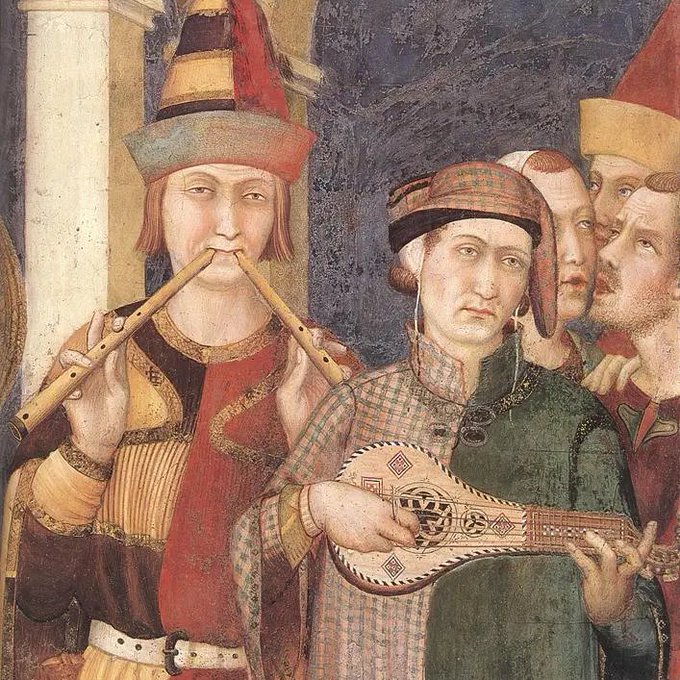I'll post more updates as I complete more chapters! Next up: Mary of Egypt! 5/5
In this chapter, the #LegendaAureaItaliano translator translates the Latin virilis (manly) as "uomo franco". I liked this choice very much. In medieval Italian, franco means many things: free, courageous, noble. Someone whose morals cannot be bent. 3/5
When Piccarda meets Dante in Paradiso 3, she tells him most things about her life: how she wished to become a Poor Clare, how her brother Corso abducted her from the convent, etc.
But there's one thing that Dante's Piccarda doesn't say: what happened to her after her marriage.
In medieval art, the Ascension is often represented mid-action, with Christ's feet dangling from the clouds. In this Bible from 15C Hangenau (Germany), the artist added a cute detail: Christ left his footprints on the ground. 1/3
Simone's background crowds never fail to deliver. Look at these musicians, playing a mandola (right) and a double flute (left). Look at the singers in the background, singing cheek to cheek with their eyes turned towards the sky! 8/8
These two dudes do not seem happy to be trapped inside the initial of a medieval manuscript. (Tours, Bibliothèque Municipale, MS 654) https://t.co/iPrNiBpIc2
Day 4 of my #MedievalSicilian food-themed #Advent2020.
Today, we're talking about cassata, a signature Sicilian cake filled with ricotta. In the Middle Ages, though, cassata was a savory cheese pie, not a dessert! The earliest mentions of sweet cassata date to the 1600s.












